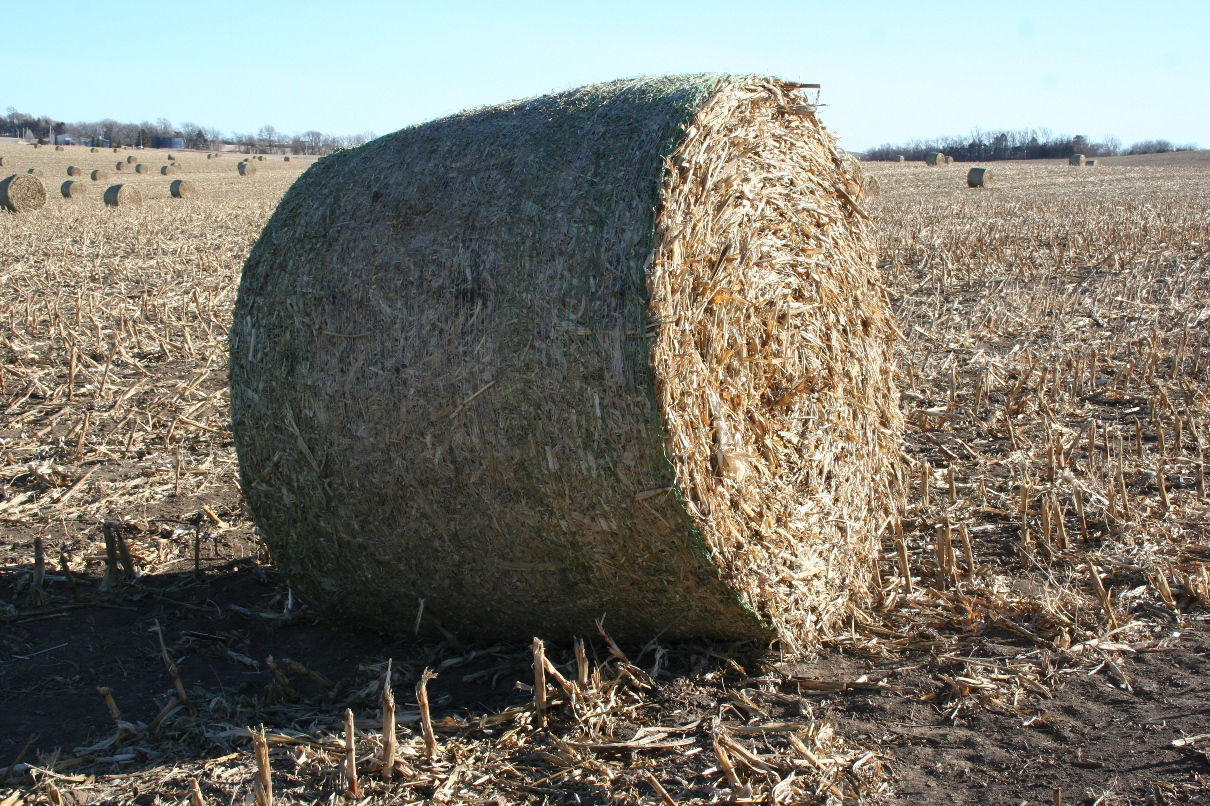2 MIN READ
Nutrient Value of Corn and Soybean Residue
January 9, 2020
The harvesting of crop residue has been an ongoing practice in many areas the past several years (Figure 1). With the increased use of distillers grain being mixed with crop residue as feed for beef cattle and other uses for the cellulose in crop residues, growers are asking questions about the nutrient impact of removing residue.

The first step in estimating the impact of removing residue from fields is estimating just how much residue is produced and how much can be removed. Most often, the estimation of residue produced is correlated to the amount of grain produced. About 1 ton of dry residue is produced for every 40 bushels of corn and every 30 bushels of soybean.
Keep in mind that the removal of all residue should be avoided. Fields that have potential for wind or water erosion should not have residue removed. To maintain organic matter, at least 2 tons per acre or more residue should be retained in the field depending upon tillage system.
After determining the amount of residue to be removed, a grower can determine the value of the nutrients in the crop residue. Table 1 shows the average pounds of nutrients removed per ton of residue.
If corn stalk residue is removed, a significant amount of K is also removed and should be accounted for when planning nutrient applications to the field prior to the next growing season.

Doug Gloystein
Channel Agronomist
1Wortmann, C.S., Klein, R.N., and Shapiro, C.A. 2012. Harvesting crop residues. NebGuide. G1846. University of Nebraska.